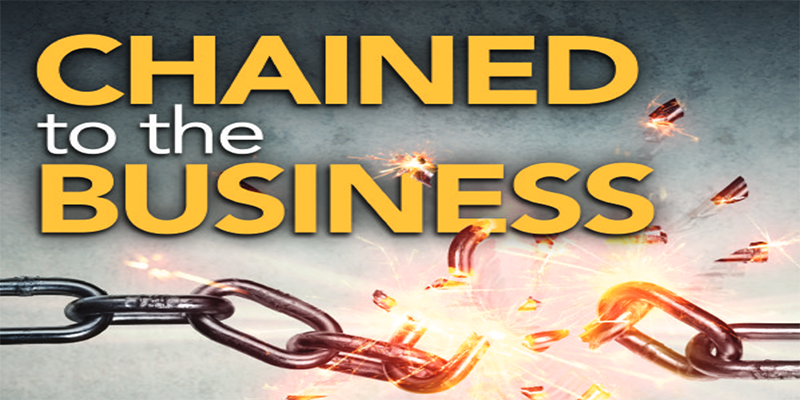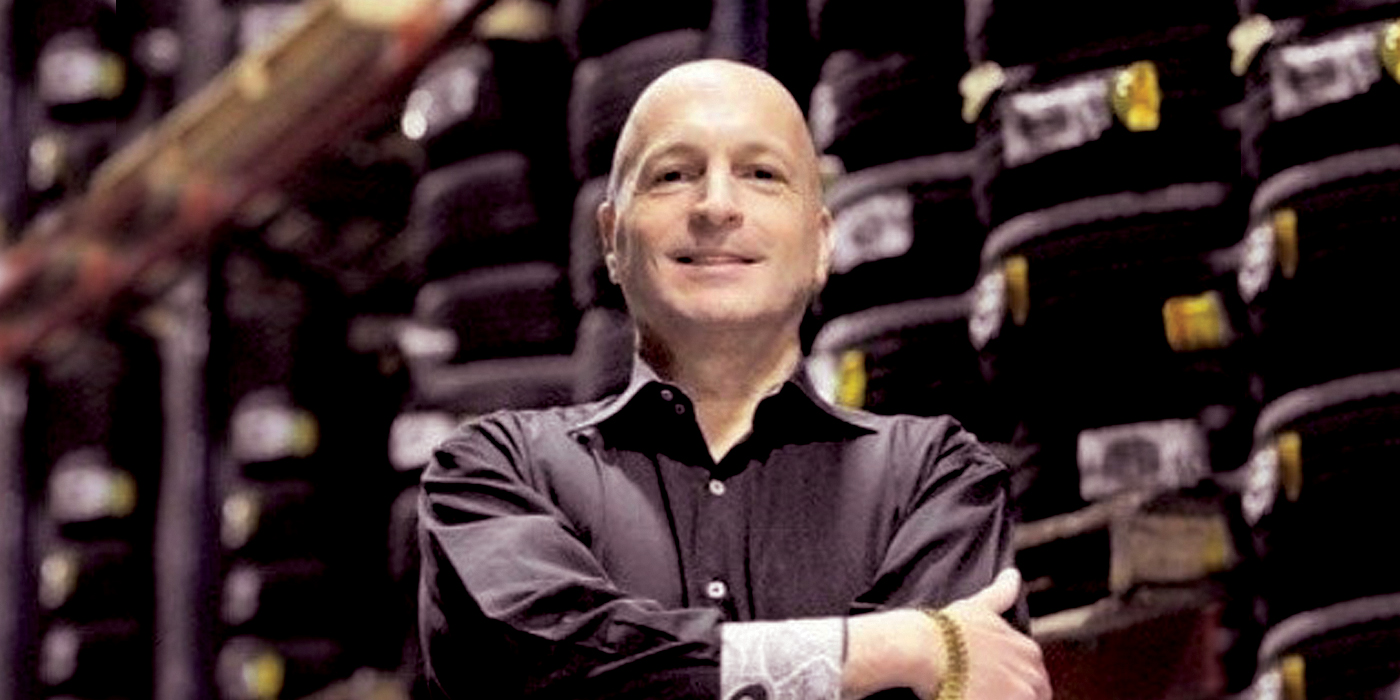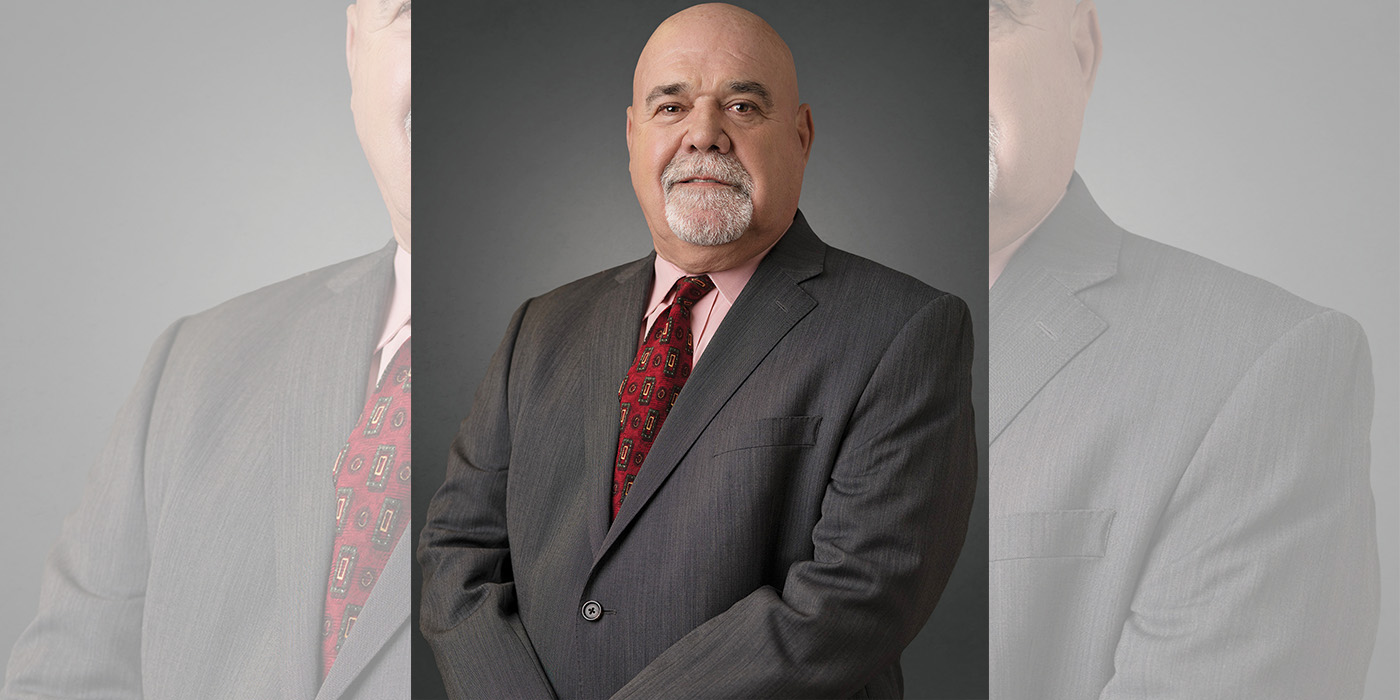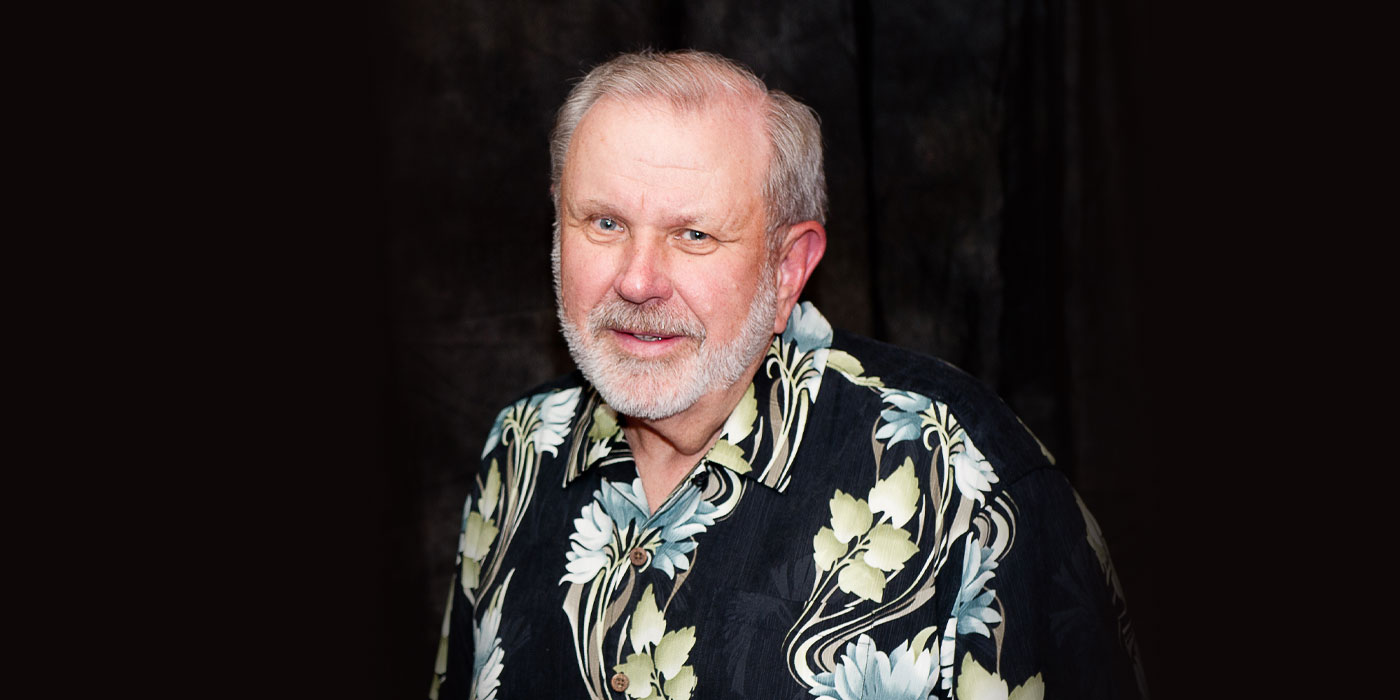Being successful takes a commitment, which can be so all-consuming for some that it’s impossible to get away to enjoy the spoils of success. Conversely, entrepreneurs are often afraid that if they leave the business, it will struggle. This is what is referred to as being “chained to the business.” It’s not uncommon, and it happens to many business owners for a host of reasons.
Successful entrepreneurs are enthusiastic, optimistic and look to the future. They believe they’ll be successful and are willing to risk almost everything in pursuit of making a living. They possess high energy levels and can very often be impatient. They are always thinking about their business and how to take things to the next level. What they often don’t think about is the time involved in running the business.
We all start businesses with the goal of being a success, and that being successful will provide us a certain lifestyle. Unfortunately, so many develop the opinion that the business owes them something, failing to ever see that it only presents them with an opportunity. Basically, we only reap what we sow. A business doesn’t owe the owner a living. But it does present an open-ended opportunity for them to work hard, sacrifice and pour their hearts and souls into making it succeed so they can make a good living.
In this industry, so many businesses were opened without having a real plan in place. For example, you may have been the best technician (mechanic was the term years ago) working for someone else. You had a desire to do better and thought you could make more money on your own. So you found a small garage and scraped together enough capital to get started. Or, maybe you were the best salesperson in the local tire store and felt the owner was holding you back, so you ventured out on your own and started selling tires. Perhaps you were managing a dealer’s business and decided that you wanted more for yourself and your family. You worked hard and the store was successful. The owner was older and you worked out a plan to buy them out and take over. There are also those who grew up in a family business. It became part of who you are. Going to work for your dad and/or mom seemed the best career choice and you gave it your all with hopes of one day taking over.
It doesn’t matter how you started – it was that entrepreneurial drive inside that told you to take the leap or look for an opportunity to be your own boss. What so many don’t realize in the beginning is that it takes more than hard work and commitment to be successful. It often requires a lot more capital than anticipated, which makes the journey ahead more of a challenge.
When you work for someone else, the paycheck is always there on Friday, you usually have some additional benefits like vacation and healthcare, and there’s a feeling of security. You watch as thousands of dollars come through the door every day. For some, you greedily want a bigger piece of the pie. It can be a good living working for someone else, but for the true entrepreneur, that’s not enough. You want to be your own boss and experience the excitement and rewards that come with owning your own business. The cold awakening is that on your own, there’s uncertainty, financial pressures, risk of failure and dozens of other concerns that you never anticipated. These concerns and pressures can so easily become chains of “business bondage” if you let them. That’s why it’s so important for every business owner to develop a formal plan, one that allows him or her to break free and enjoy life.
Businesses go through stages, and every owner has a different story. In the beginning, you start by basically doing anything and everything that is needed. You seem to work endless hours and are able to scrape by and pay all the bills, including yourself.
As Dawn Tilghman, owner of Burnett-White Tire in Salisbury, Maryland says, “It’s scary, but you put one foot in front of the other every day and stay the course. You keep going no matter what. As a single mom, it was doubly hard for me. I had to juggle the business issues, deal with customers, and make sure all the bills were paid while raising a young family. I had to be able to turn the business off because of the family, but was chained to a degree because I couldn’t duplicate myself.”
As the sales and profits grow, you develop a foundation, which allows you to keep building. It’s much like building a house. You need to have a firm foundation in place to support the structure being built on top of it. There are always bumps in the road. It’s not a straight line to success for sure, and hopefully you learn from your mistakes and errors. Business is often like a pendulum swinging back and forth. There are times when everything goes well, sales are strong, employees are happy and you’re able to put a couple of extra dollars in the bank. Then for no apparent reason it swings, and a good employee leaves, sales may soften, unexpected expenses crop up or something in the community adversely affects the business. You can’t seem to even catch your breath.
“For me in the beginning, there was not a lot of time to break away,” says Marvin Steele, owner-partner of Steele-Guiltner Tire in Memphis. “The first five years was tough and it didn’t get easier, but you have to find time for family.”
For others, the first few years may not be as demanding. Sales may not be consistent and there may be holes in the appointment pad, so you can squeeze some time off here and there. As things improve, so do the demands on your time. It’s not only taking care of customers, it’s the after-hours time required to balance the books, meet with suppliers, pay the bills and a host of other items. You have to work harder “in” and not “on” the business, and often can’t afford to take time off. This seems to be when the chains tighten and hold fast unless you have a plan in place.
Rich Hoffman, owner of Hoffman Tire in Fayetteville, Georgia, felt the chains binding him and decided that he needed to find a better way. Working with a consultant, he developed a long-term exit strategy.
“It seemed natural to start with where I wanted to end,” said Hoffman. “I decided what was important to me, and we built a plan to accomplish where I wanted to be down the road.”
For Hoffman, it was a progression.
Having controls in place was paramount, as was having access to timely financial and operating information.
To release the constraints of ownership, it helps to have tracking reports in place to maintain what is going on in your absence and be able to hold people accountable. Critical to your success, in my opinion, is having a strong financial footing.
“You have to have your personal financial house in order and develop a focus on building as little personal debt as possible,” Hoffman says. “You have to be in a position that if the business tanks, you can ride out the downturn. If you don’t save for a rainy day and have to pay for all the toys, you can easily get chained.”
Steele and Tilghman both agree that your personal financial security will affect your decisions. It can make it difficult to break free due to the stress of having to pay your personal bills in addition to the businesses.
Steele adds, “Financial wherewithal is so key to a business. You can make money, but at times not be able to pay your bills because you’re underfunded. We often focus on paying expenses, but can easily forget that paying for excess inventory and carrying too many receivables will drain a bank account quickly. To me, it is so important to have a relationship with a good banker who believes in you.”
A Common Thread
The dealers I spoke with all agreed that having a plan, being in a secure financial position and having access to information were all key when it comes to breaking free from the business. But as the business grows, you have to add people at all levels, which adds additional expense. This often requires a trade off in that you have to decide when and how many need to be added. It’s a balance. At times a full-time person may not be justified, but you’re at a point that the current staff can’t quite handle the needs of the business. You know that another person will generate additional sales and profits, but you may have to personally sacrifice in the short term for the longer-term benefit of growing the business. As a good friend of mine says, “we have to be like a chameleon and adapt to succeed.”
Growing and adding people involves letting go of responsibility. We can’t do everything ourselves. But letting go can be very tough for some owners.
I liken this to being a parent and dropping your child off at school for the first time. They’re your baby. You’ve watched them grow, loved and protected them from harm, taught them, and now you have to trust someone else to watch over them. Walking away that first couple of times is hard for a parent, but you know it’s just part of growing up. I believe it’s the same for business owners, and if you are not prepared to trust others to run the business in your absence, you’ll be chained forever.
“My ego said that nobody can do it like me,” Hoffman says. “I was afraid to let go in the beginning and was not sure what would happen. Employees will never do it like me. You have to develop an attitude that if the results are okay when you step away, then you need to accept and weigh the benefits of having time off. I asked myself what would happen if I was out for maybe six months with a health issue, and the answer to develop a plan and take the step became clear.”
As a business owner, your business defines who you are, and it creates a strong emotional tie. Your name is on the building, and you become an integral part of the community. This makes stepping away that much harder.
“When you open your business you don’t know how to not be chained,” Steele says. “Nobody cares as much as you do, and if you’re not committed, you won’t be successful. Having good people is the key to success. I was fortunate to have two sons who grew up in the business, and a great partner in Jay Guiltner. As we expanded to four locations, they ran the business when I was not around, and it made such a difference enabling me to break the chains. As the business matured, it allowed me to get involved with politics as a state representative and help other businesses by serving on their boards.”
Tilghman grew up in the family business.
“I was given the gift of my dad to learn from,” she says. “When he went on vacation, he would step away completely leaving me to run the store. He didn’t micro-manage the business, which allowed me to grow. When I bought him out some years ago, he was still there when I needed him, which was a big help.
“When family is involved and it’s generational, it gives a different perspective for sure. People are certainly paramount, and there may be times when you have to decide who is best for running the business in your absence – a son or a manager from outside the family.”
There are three different paths with Tilghman, Steele and Hoffman. Tilghman grew up in a family business. Steele worked for Firestone before joining a local independent as a partner. He later bought him out and joined forces with another local dealer as a partner before expanding. Hoffman worked for a manufacturer before opening his business in the late ‘70s. They are all successful and have all broken free from being chained to the business.
Based on my experience as a past business owner and drawing from the discussions and conversations with numerous other dealers, I would suggest that the following five pieces need to be in place so you can truly break free from the chains that hold you to the business. As I said earlier, each business has its own story.
1. There needs to be a plan or a strategy in place for the business. As Benjamin Franklin said, “By failing to prepare, we are preparing to fail.” This is so true in so many parts of our lives, but especially with running a business. Hoffman’s idea of placing a stake in the ground for where he wanted to be down the road may be a good place to start.
2. Your business needs to be profitable and have the financial means to sustain the ups-and-downs. As Steele recommends, make sure you have a relationship with a good banker who understands your business and will work with you through the ups and downs. Your personal finances should also be in order, which will help relieve the stress of the business having to perform well to maintain your lifestyle. Hoffman made reference to “toys.” We all want them and when you work hard, you deserve them. Just make sure the business has adequate capital before you buy that boat, race car or vacation home.
3. You need access to financial and operating information on a timely basis. A good point-of-sale system should provide the operating information fairly easily. A bookkeeper and/or accountant needs to provide accurate financial information on a timely basis, ideally within a couple of weeks after the close of the month’s business. If you don’t have current, timely information at your fingertips, making decisions that affect your business can be delayed. These delays create stress and only serve to tighten the chains that bind you to the business.
4. You need to have good people who you trust at all levels of the business. This starts with job descriptions and ensuring that everyone is working towards a clearly defined objective. People need to be held accountable. What gets measured gets achieved. You also need to have someone managing the day-to-day business with a financial incentive to reach established objectives. Remember Hoffman’s thought about what would happen if you had to be out of the business for six months.
5. You need written policies and procedures for your employees to maintain controls. This goes hand-in-hand with an employee handbook, and I would suggest regular meetings with your employees so everyone clearly understands your expectations. Communication is key.
These suggestions do not address the emotional side of letting go, which everyone will have to come to grips with in their own way. As parents, we each learned to let our kids go and trust they would be okay. That doesn’t mean that you aren’t a part of their lives and don’t spend time with them. You still check in on them and serve as a teacher, cheerleader and disciplinarian when needed. As business owners, you need to take the same approach. The five points stressed above provide the basis to stay on top of what is going on in your business.
“You need to clearly teach the business model that you established,” Hoffman says. “Then monitor results and coach your team to ensure it’s done properly. When you’re not in the business, they’ll be able to take over.”
It’s so easy for your people to turn to you for answers when presented with a challenge or question, and that’s when we need to empower them to make decisions. Stanley Marcus, the man behind the iconic Neiman-Marcus stores, once said, “You have to empower your staff to use their judgment and go beyond the standards set down on paper and by the computer.”
When it’s the right decision, we praise; when it’s not, we need to take the time to coach. That’s how they learn and how you build loyalty. When they veer off course – and they will assuredly do so at some point – then you need to step in and help with corrections. The only way a business or child will run by itself is downhill. You need to be a part of ensuring that both stay on course.
In discussions about breaking the chains, it surprised me that so many of those I spoke with are at the age when retirement is approaching fast, or they are beyond society’s traditional mid-sixties benchmark of hanging it up. It opened my eyes because if they had not planned ahead and worked their plan through some of the suggestions above, they may still be chained to the business.
If you work for a large corporation, you had the opportunity to invest in some type of retirement like a 401K program. As a small business owner, your retirement is based on your success. Hoffman developed his strategy with a starting-at-the-end objective so when he wants to exit the business, he is in a position to do so. Many of us have done the same in our own ways.
Steele is still working well into his 70s. He has turned over the day-to-day operations to his partner and sons but still loves looking at the numbers. His health is good and he enjoys coming into the office and keeping his hand in the business. The business has defined who he is, but by no means is he chained.
Hoffman is in a similar situation where he is working well past the traditional retirement age. He comes in when needed and monitors the day-to-day activities. Hoffman has not been chained for many years and feels that developing his exit strategy early and working towards the objective has been the key for him.
I talked to numerous other dealers in this same position, and they universally say that as long as they are healthy and happy, they have no plans to fully retire.
Tilghman likes the fact that she can stay as long as she wants in the business. She enjoys staying engaged and being a part of the community. She feels it has certainly defined who she is, and says it’s not so easy to just walk away.
Staying involved as a “want to” versus a “have to” option is a great benefit for many owners. Staying involved because you don’t have an exit strategy can become a burdensome tether that can prevent you from breaking free at a pivotal point in your life.
For the younger owners reading this article who do not have an exit strategy in place, the suggestion is to make the time to develop the plan early. A recent survey found that small and medium-sized businesses are not adequately prepared for their business succession. Only 10% of owners surveyed have a formal, written succession plan; 38% have an informal, unwritten plan; and the remaining 52% do not have any succession plan at all. This suggests that succession planning is a critical issue. Unlike corporations, small businesses and partnerships without solid succession plans often fail when the owner or a partner retires, becomes incapacitated or dies. Problems can also arise when partners no longer get along and decide to part ways. Proper succession planning is essential for family businesses in particular, which will have to either identify family members who are qualified to manage the business, or consider other contingencies beyond the family. Planning early, basing decisions solely on business needs and revisiting the plan as conditions change are the keys to a successful hand-off.
Every business has a story, and every business has a somewhat different business model. The business defines who we are in the community and in life. Some of us are able to have a balance between our personal and business lives. Others struggle to find that balance, which is what being chained to the business is all about. There’s nothing wrong with working hard and putting in long hours, provided you make the time to enjoy the spoils of your success.
If you are a business owner who has a good balance in your life, congratulations.
If you’re chained to the business, take a step back and figure out why.
Make the time to prioritize what is important in your life and develop a plan to loosen the grip.
Talk to others in the business who are not chained and ask how they were able to break free. Ask for their advice.
The suggestions mentioned are not from a textbook or business analyst. They are from successful business owners in this industry who have figured out how to have balance in their lives, who found a way to break free from the gilded chains of running a successful tire business.














